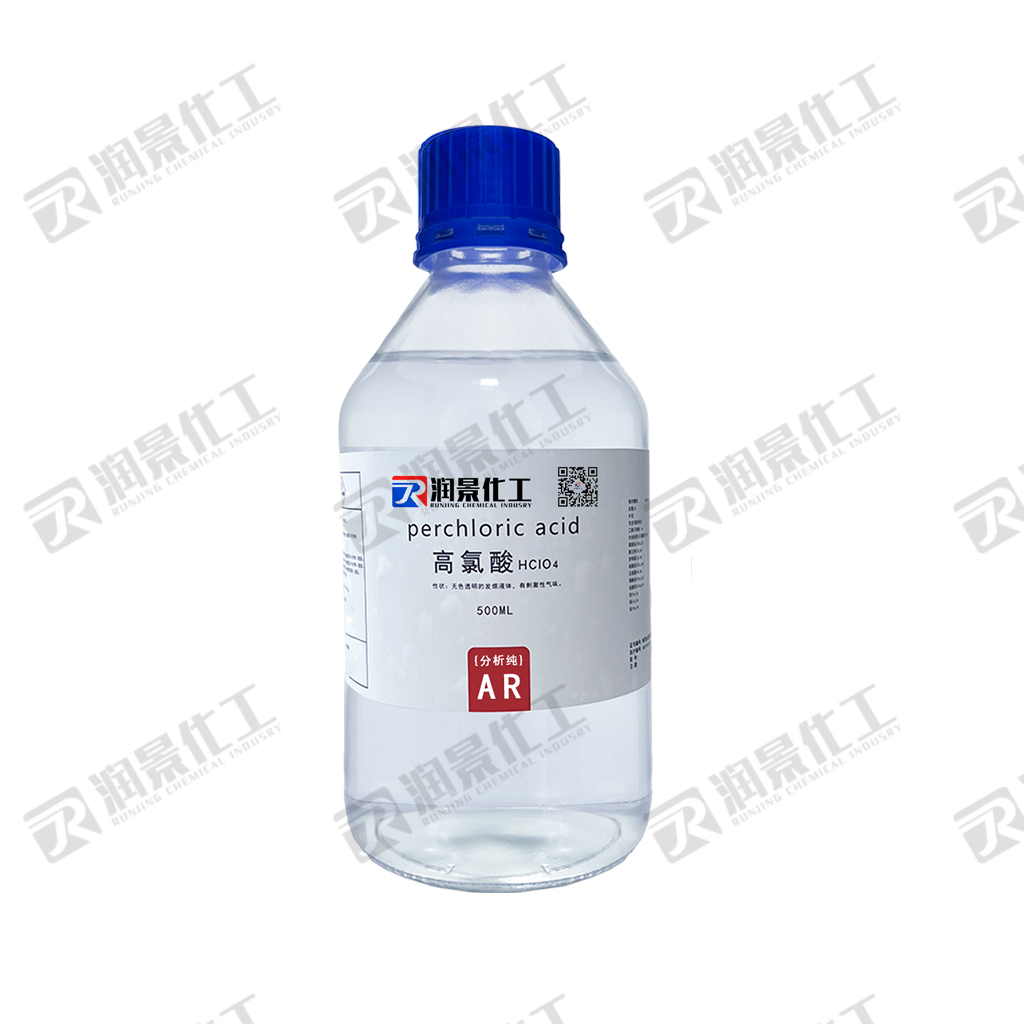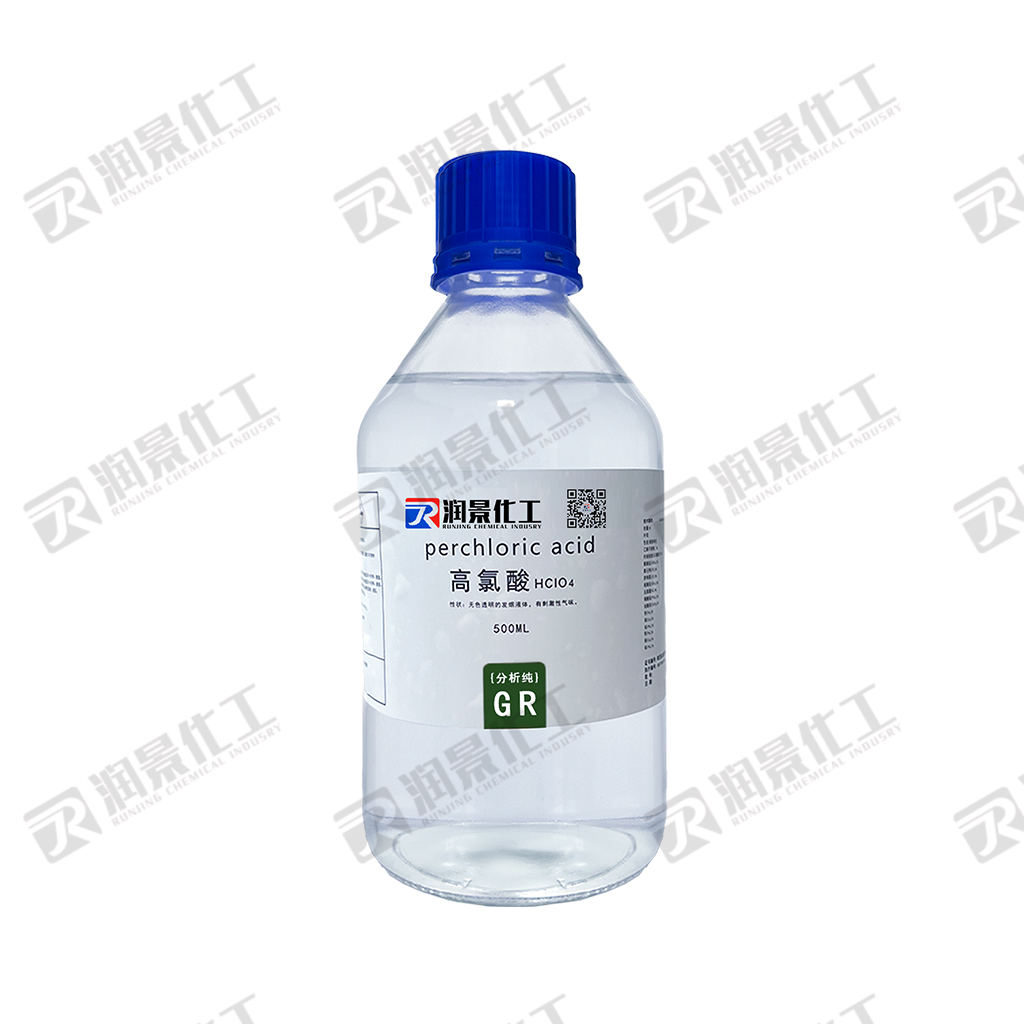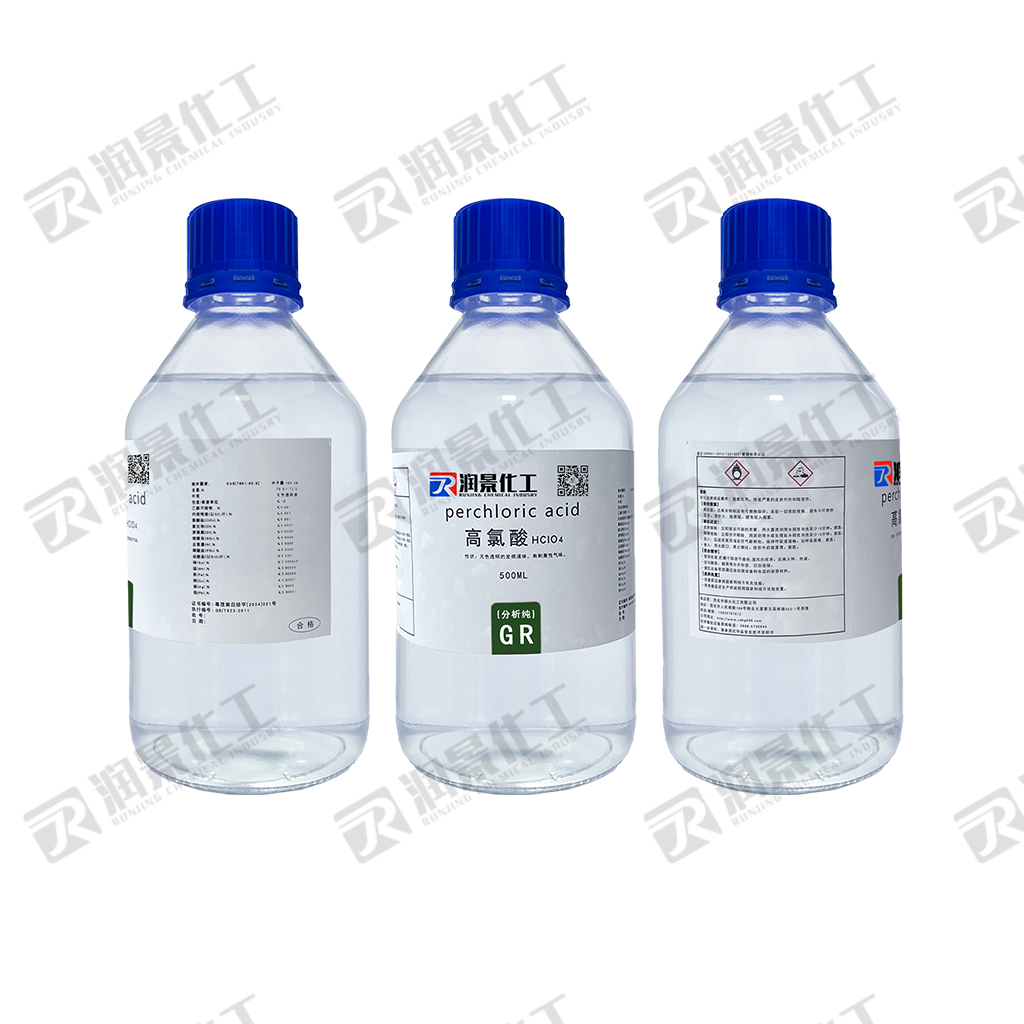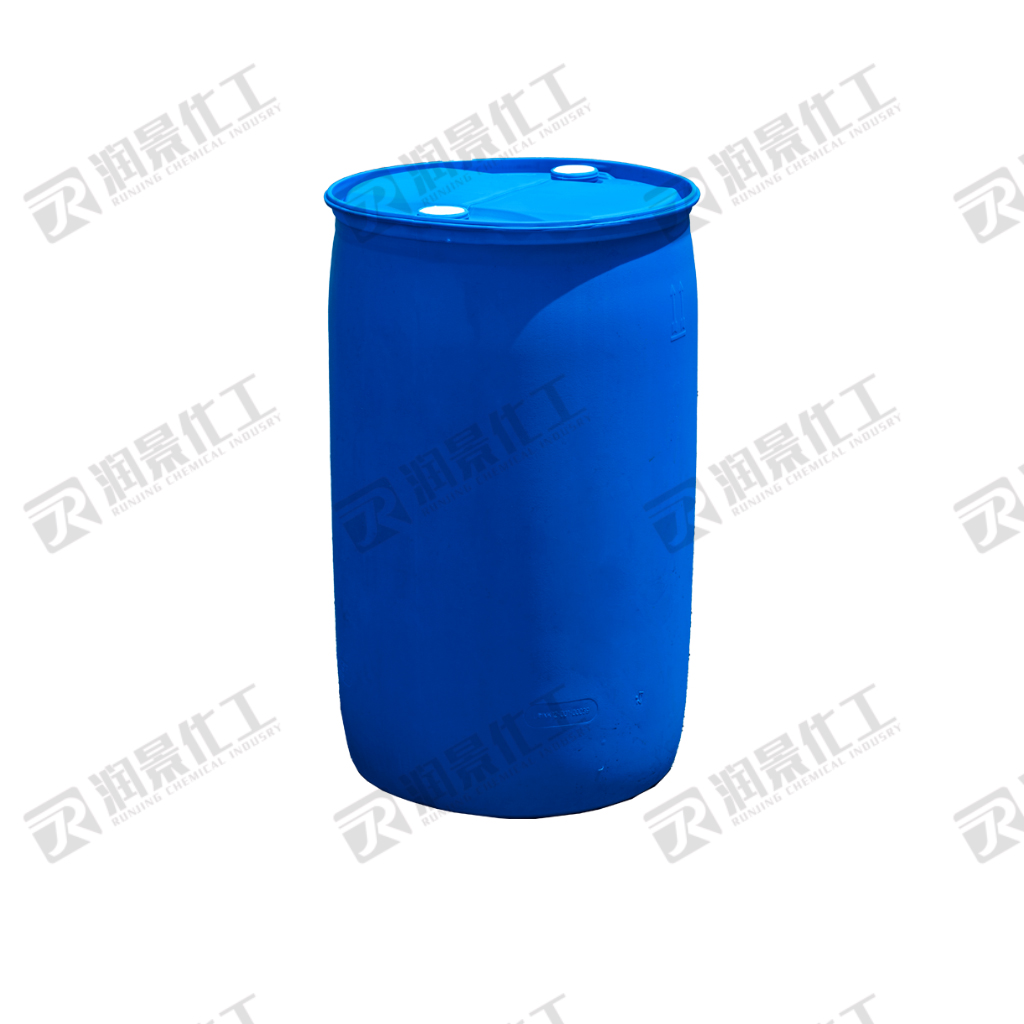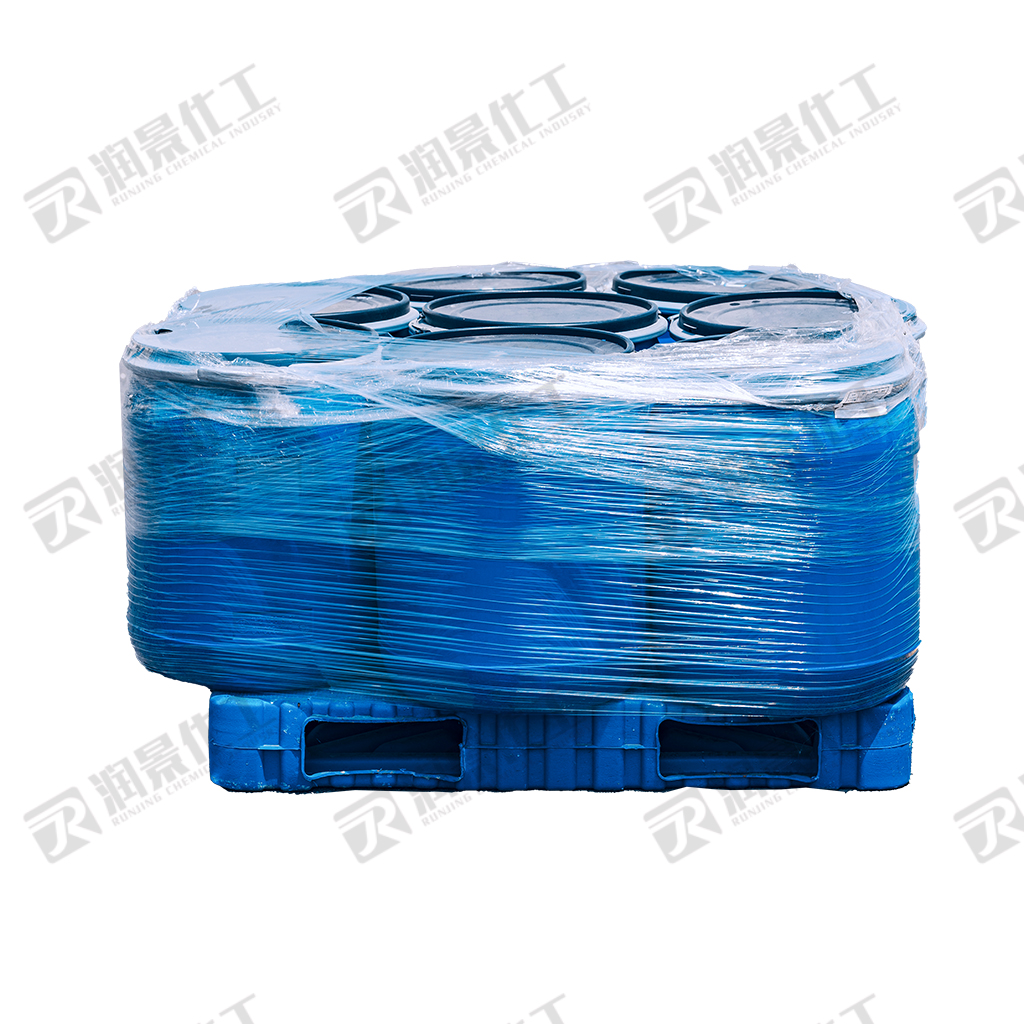- Appearance: Colorless transparent fuming liquid
- Density: 1.664 g/cm³ (70% solution at 20°C)
- Melting point: -17°C
- Boiling point: 203°C (70% solution)
- Volatility: Highly volatile, releases fuming acidic gases
- Solubility: Completely miscible with water, releases a lot of heat when dissolving
- Hygroscopicity: Strongly hygroscopic, easily absorbs moisture from the air
- Self-igniting: Non-combustible but flammable
- Stability: stable, but may decompose at elevated temperatures
Packaging specification
- 250 kg/plastic drum
- 40 kg/drum
- 25 kg/drum
- 500 ml/bottle
preparation (chemistry)
In industrial production, perchloric acid is prepared mainly from chloride and chlorate. Saturated aqueous solution is firstly generated, and after purification and filtration treatment, perchlorate is then prepared by electrolysis process. Then, through the acidification decomposition reaction, the perchlorate is converted into perchloric acid, and then through the steps of filtration and distillation, finally obtaining thePerchloric acid, industrial grade. Perchloric acid can be synthesized in the laboratory using concentrated hydrochloric acid or concentrated sulfuric acid with sodium perchlorate or potassium perchlorate as the raw material by distillation under reduced pressure in the presence of a dehydrating agent.
appliance
Perchloric acid belongs to the group of inorganic compounds that are used industrially for the production of various perchlorates. Due to its strong oxidizing properties, it can react with most metals (including gold and silver) to produce the corresponding metal perchlorates. Common perchlorates include sodium perchlorate, potassium perchlorate, magnesium perchlorate, lithium perchlorate, silver perchlorate, rubidium perchlorate, cesium perchlorate, and amino perchlorates. Of these, sodium perchlorate and potassium perchlorate are the most commonly used perchlorate species.
In addition to the synthesis of various perchlorates, perchloric acid can also be used as an inorganic oxygen-containing acid because it is the strongest acid in the inorganic oxygen-containing acid and has strong hygroscopicity.Chemical raw materials. It is widely used in a number of applications, including as an oxidizing agent, a desiccant, a solvent and a reagent for chemical analysis. In industrial production, perchloric acid is used in the synthesis of acrylonitrile polymers, the manufacture of pharmaceuticals, the purification of synthetic diamonds, electroplating and electropolishing processes. In addition, it is used in the production of movie films, fireworks and explosives.


